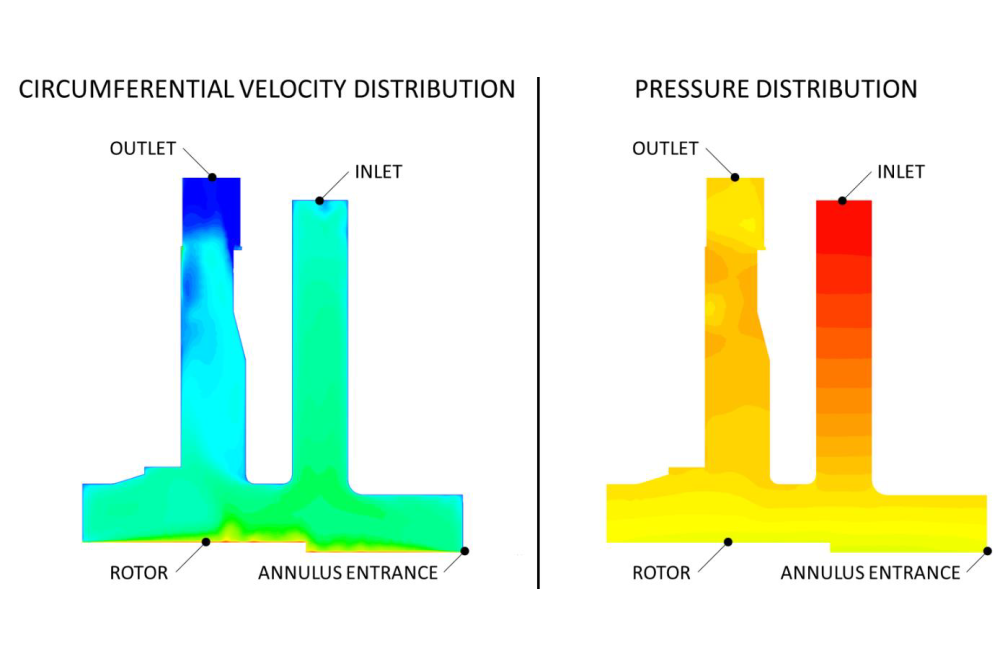Prediction of the Hydrodynamic Forces in Annular Seals and Journal Bearings for the Validation of an Analytical Pressure Model and Construction of a Test Bench
Einleitung
The rotordynamic design of turbomachinery like feedwater pumps is depending on numerous factors, including mechanical design, bearing characteristics and fluid-structure interactions. Usually, fluid -structure interactions occurred between motionless and rotational parts. Journal bearings and annual seals are typical examples of such essential machinery components. Both, bearings and seals consist of narrow annuli between rotor and stator filled with fluid and both components exert hydrodynamic forces on the rotor that cannot be neglected during rotordynamic design. Unfortunately, the availability of accurate and reliable experimental data to validate time efficient tools necessary during the design process is rare. Therefore, a specially designed gap flow test rig is developed at the Chair of Fluid. To carry out the calculations of the governing equations, the Lichtenberg cluster is used to optimize the corresponding flow parts and to determine the future performance data of the test bench.
Methoden
For the design of the test rig, the three-dimensional incompressible flow solver of Ansys Fluent in combination with an RSM turbulence model to calculate the complex flow pattern inside different parts of the test rig was employed. The meshing with approximately 4.6×106 unstructured cells was carried out using Ansys ICEM and the results of the simulations, i.e. the integrals measures: (i) the forces on the rotor in the radial, circumferential and axial direction and (ii) pressure distribution inside the different parts were evaluated using Ansys CFD Post.
Ergebnisse
During the first part of the project, extensive parameter studies were carried out to investigate the relevant parameter range of the rest rig and the flow patterns inside the different parts. The results were evaluated regarding pressure drop, flow separation and the occurrence of vortex structures, i.e. Taylor vortices at the investigated operating points. Based on this evaluation, in the second part of the project, the different parts of the test rigs are adapted and optimized regarding the formerly mentioned measures. Subsequently, the optimized geometry of the test rig was evaluated regarding the optimal sensor positions within the test rig and its overall performance data. Here, the most relevant measures to acquire were the static pressure before and after the annuls as well as the pre-swirl measured by a pitot-tube and the dynamic pressure at the gap entrance. Therefore, the outcome of the project is a flow-optimized test rig geometry as well as the most effective position of the sensors regarding the desired measurement variables.
Diskussion
The rotordynamic design of turbomachinery like feedwater pumps is depending on numerous factors, including mechanical design, bearing characteristics and fluid-structure interactions. To overcome the lack of accurate and reliable experimental data, a test rig was optimized within the project. The simulations carried out at the Lichtenberg cluster are used to determine the optimal flow path geometry as well as the most effective position of the sensors within the test rig. The optimized geometry is then used to build a worldwide unique test rig for the accurate determination of the rotordynamic characteristic of annular gaps like journal bearings and annular seals.




